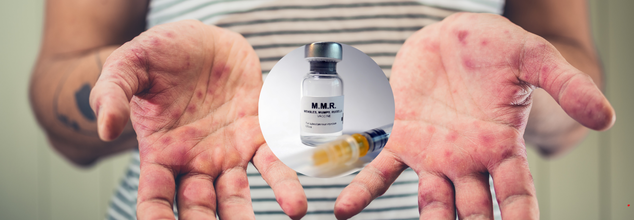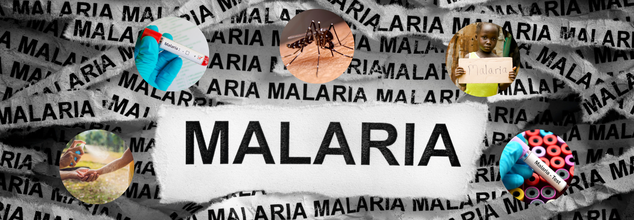- Health Conditions A-Z
- Health & Wellness
- Nutrition
- Fitness
- Health News
- Ayurveda
- Videos
- Medicine A-Z
- Parenting
- Web Stories

Credits: Getty
'Autism Is Preventable', RFK Jr. Blames 'Environmental Toxin' For Surge In Cases
In his first press briefing as the U.S. Secretary of Health and Human Services, Robert F. Kennedy Jr. ignited a firestorm in the scientific and autism advocacy communities by calling autism an “epidemic” and labeling it “preventable.” Citing a new CDC report indicating that 1 in 31 American 8-year-olds has been diagnosed with autism spectrum disorder (ASD), Kennedy pledged to launch an aggressive inquiry into environmental toxins—ranging from mold to pesticides—as the primary culprits.
Kennedy's remarks were sweeping and firm: “Genes do not cause epidemics,” he said. “They provide vulnerability. You need an environmental toxin.” While acknowledging that genetic predisposition may play a role, he dismissed decades of scientific research focusing on hereditary influences as a “dead end.”
The Centers for Disease Control and Prevention (CDC) report Kennedy referenced was part of the Autism and Developmental Disabilities Monitoring (ADDM) Network. The data, gathered from 16 U.S. regions, is not nationally representative but confirms a consistent upward trend. Autism diagnoses have nearly quintupled since 2000, with experts pointing to improved awareness, diagnostic tools, and access to evaluations—particularly in historically underserved populations—as key factors.
Contrary to Kennedy’s claims, CDC scientists attribute the rising prevalence to enhanced detection methods, more inclusive diagnostic criteria, and changing social perceptions around neurodivergence. They emphasize that autism is a complex, lifelong developmental condition—not a disease.
Autism Rates Are Rising—But What’s Really Behind It?
Kennedy’s framing of autism as a public health emergency akin to measles or diabetes has drawn fierce criticism from the autism community. The Autism Society of America issued a statement condemning his rhetoric as “harmful, misleading, and unrealistic.” The organization stressed that autism is not a chronic illness to be cured or eradicated, but a diverse condition shaped by a combination of biological and environmental factors.
“Claiming autism is preventable places unnecessary blame on parents and fosters dangerous misinformation,” the Society noted. “Such language perpetuates outdated stereotypes and erases the lived experiences of autistic individuals.”
Environmental Toxins or Better Diagnostics?
Kennedy was joined at the press conference by Dr. Walter Zahorodny, an associate professor at Rutgers New Jersey Medical School and co-author of the CDC report. Zahorodny described the rising autism rates as “a real thing that we don’t understand” and called for urgent investigations into potential environmental triggers.
Still, most of the medical and research community remains cautious, if not outright skeptical. Many warn against attributing autism prevalence to a single cause, especially when Kennedy’s list of suspects includes mold, food additives, parental obesity, and even prenatal ultrasounds—none of which have been conclusively linked to autism in peer-reviewed studies.
“Autism is a multifactorial condition,” said Dr. Susan Hyman, a pediatrician and autism researcher at the University of Rochester. “While environment may play a role, the idea of an epidemic triggered by an unknown toxin is speculative at best and dangerous at worst.”
Under Kennedy’s directive, the Department of Health and Human Services will establish a new chronic disease division within the Administration for Healthy America to examine the “real-time” causes of autism. He also called for quicker and more responsive data collection, likening the current two-year surveillance lag to outdated epidemic management.
“Would we accept this kind of delay with COVID, measles, or any other infectious disease?” Kennedy asked.
His urgency, however, is not matched by consensus. Experts warn that the rush to identify a “smoking gun” risks diverting attention and funding from evidence-based practices—such as early intervention, inclusive education, and support for autistic adults.
While Kennedy’s remarks reflect a deep concern about rising autism rates, advocates caution against sensationalism. Scientific progress, they argue, requires careful analysis, transparency, and collaboration—not finger-pointing or political grandstanding.
“Autism is not a tragedy or a mystery to be solved—it’s a part of human diversity,” said Julia Bascom, executive director of the Autistic Self Advocacy Network. “What we need isn’t panic. It’s understanding, support, and a commitment to listening to autistic voices.”
Observing this evolving narrative, one thing is clear—Kennedy’s approach may catalyze new research, but it also demands rigorous scientific scrutiny and ethical accountability. His framing risks reinforcing outdated narratives about autism as something to be feared or eliminated. For a global audience, particularly in countries with limited autism services, the danger of misinformation looms large.
Autism is not a singular crisis with a singular cause—it is a nuanced condition that exists on a spectrum, influenced by layers of genetics, biology, and environment. Addressing it requires nuance, not noise. While the U.S. gears up for what Kennedy calls a “series of new studies” on environmental triggers, global health agencies—especially in developing nations—should approach these efforts with caution. The risk is that Kennedy’s messaging, amplified by his political stature, could shape international policy without scientific consensus.

10% Drop In Vaccination Rates Could Lead To Millions Of Measles Cases In US Over 25 Years
US childhood vaccination rates have taken a disturbing decline, exacerbated by the disruption caused by the COVID-19 pandemic. It is not simply a statistic—but a warning sign of future health threats. The effects are already being seen, with measles rebounding and potentially the return of other diseases once brought under control, such as rubella and polio. A recent Stanford Medicine study, published in the Journal of the American Medical Association, paints a dire picture: a 10% decline in vaccination rates could result in millions of measles cases over the next 25 years.
The rising danger of preventable illness, and the reason why vaccination is key to protecting public health. From the emergence of vaccine hesitancy to the surging spread of measles.
The drop in childhood vaccinations in the U.S. has been a rising concern among health professionals. Although the disruptions brought about by the COVID-19 pandemic were a major factor, the trend of declining immunization rates is not new. For years, growing vaccine hesitancy, driven by misinformation, political controversy, and skepticism about health systems, has fueled a change in public perception, particularly among parents. Consequently, fewer kids are getting the necessary vaccines and diseases that previously were under control are now being a threat again.
The research done by a group of researchers from Stanford, together with other universities' experts, shows the risk of measles becoming endemic again in the U.S. It might occur in as little as two decades if the vaccination rate is sustained at current levels. Nevertheless, a 10 percent decline in the rate of vaccinations could make things even worse, and millions of individuals could become susceptible to infection, hospitalizations, and death.
Measles is the most infectious disease on Earth, with the potential to spread quickly through populations. Prior to the introduction of the measles vaccine in 1963, the illness was rampant throughout the U.S., affecting millions of individuals annually. Indeed, before the vaccine, an estimated 3 million to 4 million individuals were infected with the disease every year, with 400 to 500 deaths, 48,000 hospitalizations, and 1,000 instances of brain swelling (encephalitis).
As per the CDC, measles remains a lethal disease, primarily for children. It spreads via respiratory droplets when an infected person coughs or sneezes and symptoms may range from fever, cough, runny nose, and a characteristic red, blotchy rash. As the disease is vaccine-preventable with the MMR (measles, mumps, rubella) vaccine, unvaccinated individuals are at the greatest risk of being infected and infecting others.
The recent study by Stanford researchers utilized large-scale epidemiological modeling to simulate how infectious diseases like measles would spread across the United States based on different levels of childhood vaccination coverage. The results are concerning. Even at current vaccination rates, the study suggests that measles could re-emerge as an endemic disease in the U.S. within the next two decades. A mere 10 percentage point reduction in vaccination coverage would accelerate this process significantly, potentially resulting in millions of measles cases in the next 25 years.
Dr. Nathan Lo, a Stanford physician and the study's senior author, underscored the seriousness of the situation. "Our nation is at a tipping point for measles to become a routine household disease again," he said. "The declining routine childhood vaccinations, coupled with increasing vaccine hesitancy, may send us to a place we were working to avoid for decades."
Vaccine Hesitancy and Its Contribution to the Measles Outbreak
The problem of vaccine hesitancy has been a major contributor to the fall in immunization rates. The disinformation regarding the safety and effectiveness of vaccines has instilled fear and confusion, particularly among parents. A KFF survey published in 2025 found that more than half of adults were unsure about whether to believe assertions about the risks of the measles vaccine—assertions that have been magnified by anti-vaccine personalities, such as Robert F. Kennedy Jr.
This widespread misinformation has caused many to doubt the necessity of vaccines for diseases no longer perceived as a threat, like measles. But as recent outbreaks have shown, measles is hardly eradicated and still poses a lethal threat, especially to vulnerable groups like infants, immunocompromised individuals, and the unvaccinated.
Recent measles outbreaks in the U.S. are stark reminders of the risks of low vaccination levels. In 2025 alone, the nation has already seen some 800 cases of measles, the most in a single year since 2019. The largest outbreak took place in West Texas, which had over 620 cases, 64 hospitalizations, and two deaths. These outbreaks are a wake-up call that the U.S. is not immune to outbreaks of this extremely contagious disease.
According to Mathew Kiang, a study co-author, "The impact of waning vaccinations won't be sudden, but the aggregate effect could be devastating. If we do not take action now, we can expect millions of measles cases in the coming years."
What Can Be Done to Prevent a Measles Crisis?
Although the situation is grim, there is hope. Specialists such as Dr. Lo and Kiang propose that even slight increases in vaccination rates could make a significant difference in preventing the spread of measles and other preventable illnesses. A 5 percent boost in vaccination coverage could avert a sharp spike in cases, safeguard vulnerable populations, and ultimately save lives.
Health professionals remind parents to discuss with pediatricians the value of vaccinations and have faith in healthcare professionals' recommendations. Public health officials and policymakers also need to act to address vaccine misinformation and make sure vaccination mandates for school entry are intact.
This study's findings highlight the crucial role that vaccination plays in protecting public health. By potentially preventing millions of cases and countless fatalities, high vaccination coverage needs to be sustained. With the U.S. still struggling to deal with the consequences of declining vaccine coverage, it is vital that both the public and policymakers take proactive measures to ensure that such diseases as measles do not experience a resurgence.
The decision to vaccinate is such a simple choice, but the difference it makes can be gargantuan. It is incumbent on all of us—parents, medical practitioners, and members of society—to take our turn in safeguarding the next generation against the ruining effects of vaccine-preventable diseases. As Dr. Lo highlighted, "Increasing vaccination levels by just 5% can make a world of difference in keeping these diseases at bay."

Credits: Canva
World Malaria Day 2025: Theme, History, And Significance
Every year on 25 April, World Malaria Day is observed to raise awareness about one of the deadliest yet preventable diseases. As per the World Health Organization (WHO), there were 263 million malaria cases and 5,97,000 malaria deaths across 83 countries in 2023. The WHO African Region carries a disproportionately high share of the global malaria burden. As per the numbers, this Region was home to 94% of the malaria cases, accounting for 246 million and 95% of malaria deaths. Children under 5 accounted for about 75% of all malaria deaths in the Region.
Ahead of World Malaria Day, WHO also called for renewed efforts at all levels - from global policy to community action to accelerate progress towards eliminating malaria.
World Malaria Day 2025 Theme
This year, WHO has joined the RBM Partnership to End Malaria and other partners in promoting: "Malaria Ends With US: Reinvest, Reimagine, Reignite". This is a grassroot campaign that aims to re-energize efforts at all levels, from global policy to community action, to accelerate progress towards malaria elimination.
World Malaria Day History
World Malaria Day was first celebrated internationally in 2008, building upon the earlier "Africa Malaria Day", which had been observed b African countries since 2001. The date, April 25, was established by WHO in 2007 during the World Health Assembly. In 2007, it was the 60th session of the World Health Assembly where the proposal to rename Africa Malaria Day to World Malaria Day was made to acknowledge the global presence of malaria.
World Malaria Day Significance
The day has a strong significance in healthcare as it brings attention to the disease that still continues to take so many lives, especially in low-income and tropical regions. It also serves as an important reminder to continue spreading awareness about the disease as well as promoting its prevention, treatment and continuous international cooperation to fight against it.
What Is Malaria?
The WHO describes malaria as a life-threatening disease spread to humans by some types of mosquitoes, mostly found in tropical countries. However, they are preventable and curable.
WHO notes: "Malaria is spread to people through the bites of some infected anopheles mosquitoes. Blood transfusion and contaminated needles may also transmit malaria. The first symptoms may be mild, similar to many febrile illnesses, and difficult to recognize as malaria. Left untreated, P. falciparum malaria can progress to severe illness and death within 24 hours.
There are 5 Plasmodium parasite species that cause malaria in humans, and 2 of these species – P. falciparum and P. vivax – pose the greatest threat. P. falciparum is the deadliest malaria parasite and the most prevalent on the African continent. P. vivax is the dominant malaria parasite in most countries outside of sub-Saharan Africa. The other malaria species which can infect humans are P. malariae, P. ovale and P. knowlesi."
What Are The Symptoms?
The early symptoms are fever, headache and chills, which can usually start within 10 to 15 days of getting bitten by an infected mosquito.
Some types of malaria can cause severe illness and death. Infants, children under 5 years, pregnant women, travellers and people with HIV or AIDS are at higher risk. Severe symptoms include:
- extreme tiredness and fatigue
- impaired consciousness
- multiple convulsions
- difficulty breathing
- dark or bloody urine
- jaundice (yellowing of the eyes and skin)
- abnormal bleeding

Credit: Canva
Blood Test That Can Detect 12 Types Of Cancer To Go On Trial In UK
A new AI-powered blood test that can detect 12 types of cancer is to be tested on NHS patients. Using this test, experts would now be able to detect cancerous cells in people much before the symptoms appear. The trial, conducted on 8,000 patients, will analyse blood samples for tiny fragments of genetic material released by tumours.
The test called miONCO-Dx, was created using data from 20,000 patients. Initial tests have produced promising results, having shown that it can detect 12 of the most lethal and common cancers, including bowel cancer, at an early stage, with over 99% accuracy. With no other trial currently working in the same way, this is a world-leader and will support in placing Britain at the forefront of revolutionising healthcare. Notably, the UK government has awarded £2.4m to run the trial of the genetic test, which was developed by the University of Southampton and the biotech startup Xgenera.
How Does It Work?
The test was created by Xgenera, in collaboration with the University of Southampton. As little as 10 drops of blood are all that's needed to detect up to 12 common cancers. The test works by measuring the microRNA in a blood sample and using AI to identify if cancer is present and, if so, where it is located in the body.
What Cancers Will It Detect?
Lung, gastric, prostate, oesophageal, liver, bladder, ovarian, bowel, pancreatic and breast cancers–as well as bone and soft tissue sarcoma and a type of brain tumour. The Department of Health said the test was now ready for the "validation and verification" stage.
Professor Sir Stephen Powis, NHS England's national medical director, said: "This blood test has the potential to help us detect bowel cancer earlier and reduce the need for invasive tests, and the next step in this trial will now be vital in gathering further evidence on its effectiveness and how it could work in practice."
How Is A Blood Test Conducted?
A blood test is a simple medical procedure used to check various health conditions. Here's how it is typically conducted:
1. Preparation: Depending on the test, you may be asked to fast for 8–12 hours. The healthcare provider will explain any specific instructions.
2. Collection: You’ll usually be seated or lying down. A healthcare professional will tie a tourniquet around your upper arm to make the veins more visible. The inside of your elbow is the most common site for drawing blood.
3. Cleaning: The area is cleaned with an antiseptic to reduce the risk of infection.
4. Drawing Blood: A sterile needle is inserted into the vein, and blood is collected into one or more vials or tubes.
5. Post-collection: Once enough blood is collected, the needle is removed, and a cotton ball or bandage is applied to stop any bleeding.
6. Processing: The blood samples are then sent to a lab for analysis.
© 2024 Bennett, Coleman & Company Limited

